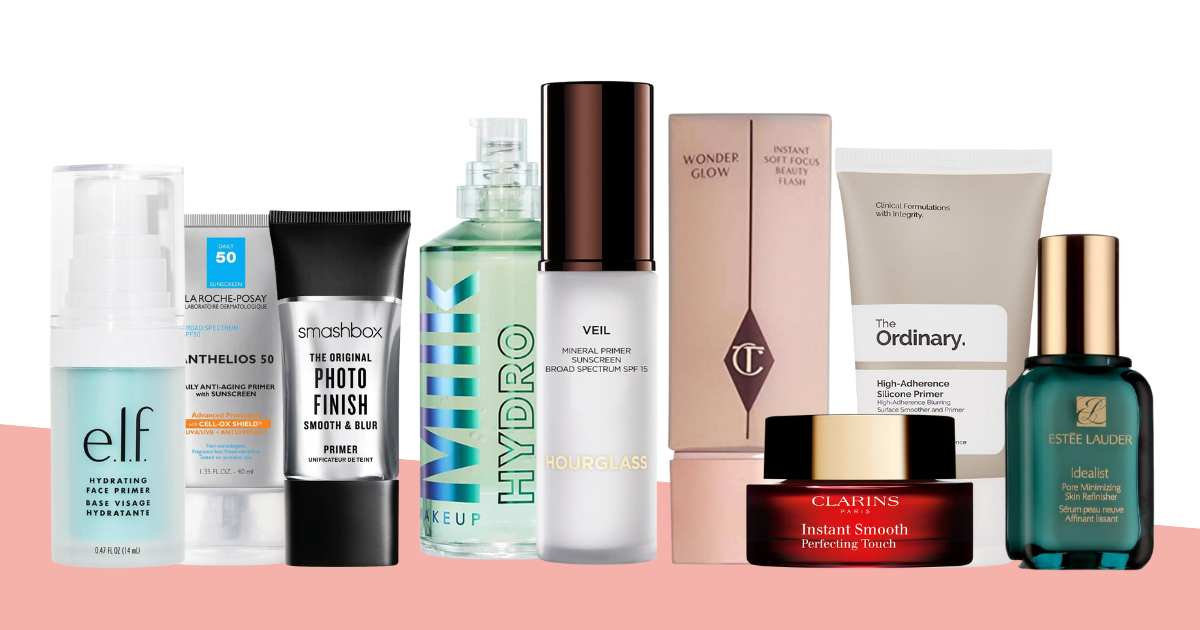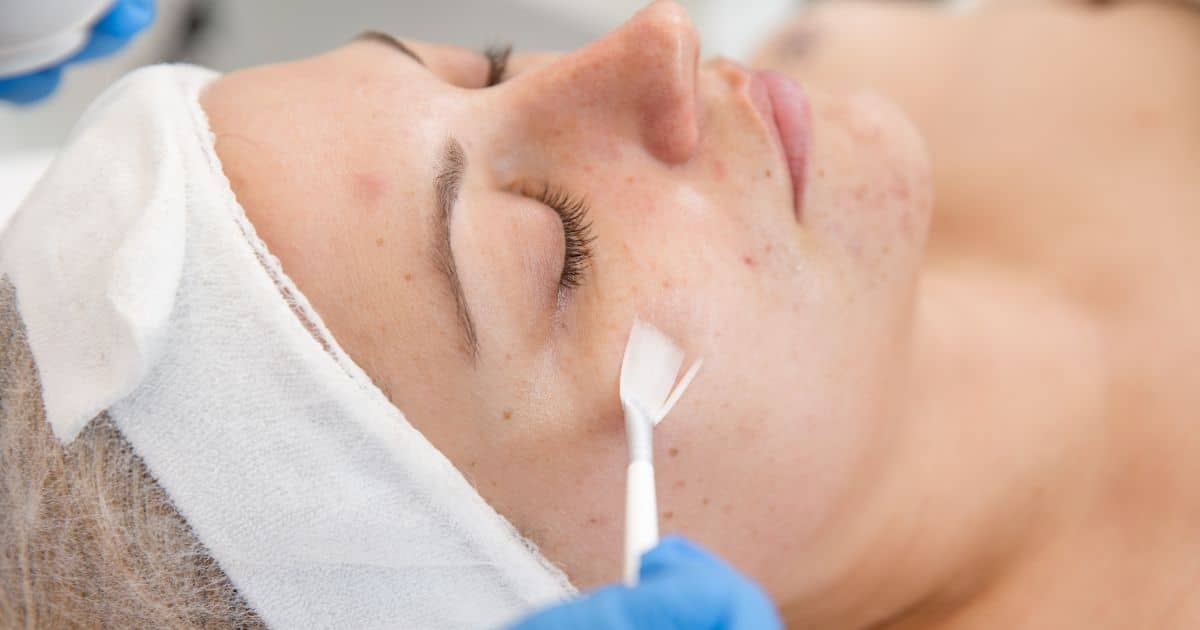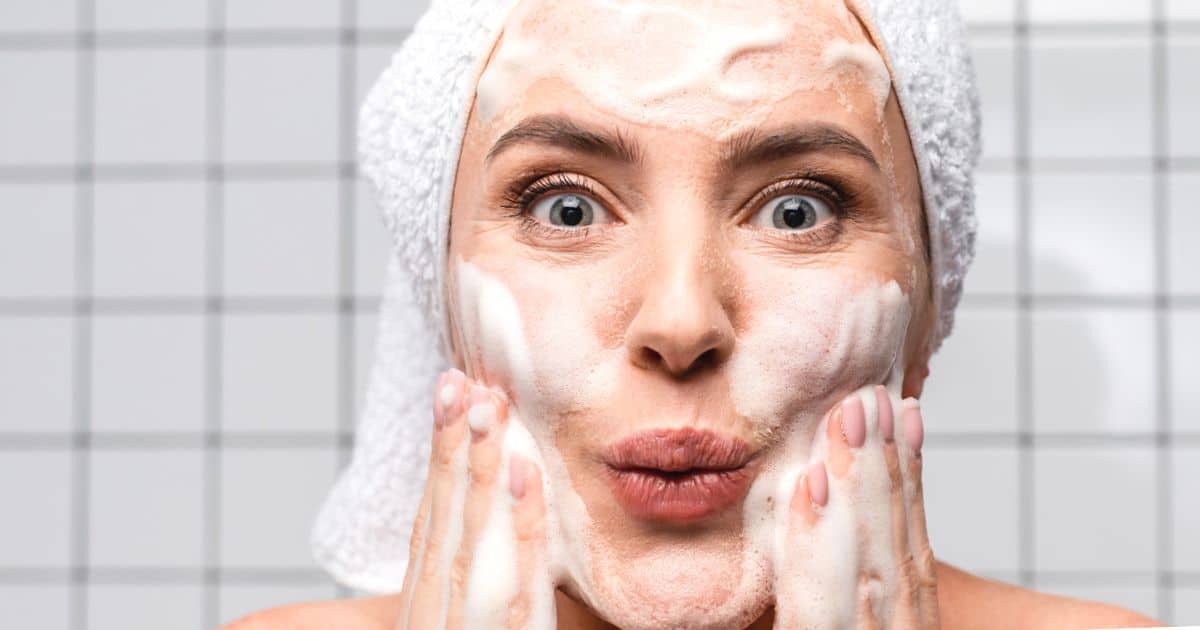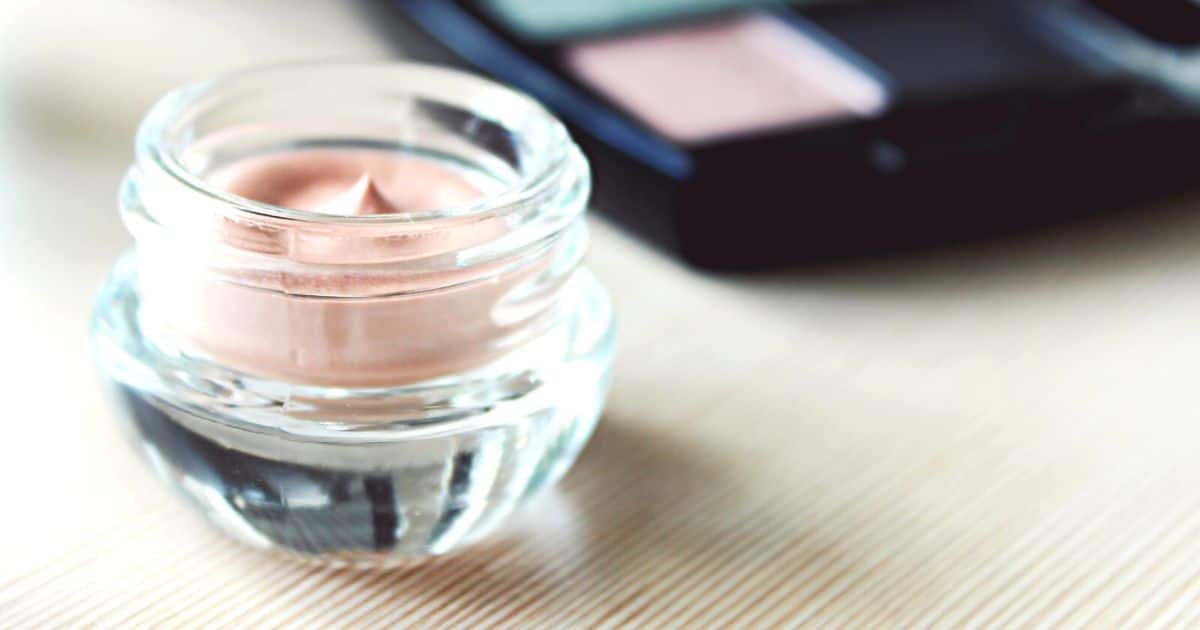Discover The Best Chemical Peel for Hyperpigmentation 2024
Welcome to the world of chemical peels! In this guide, the best chemical peel for Hyperpigmentation, we’ll explore the benefits of chemical peels for hyperpigmentation, the types of peels available, and how they can help reduce the appearance of dark spots, sun damage and other forms of skin discoloration.
So, get ready to discover the power of chemical peels in your journey towards clearer, more radiant skin.
Let’s dive in!
This post may contain affiliate links. Read disclosure here
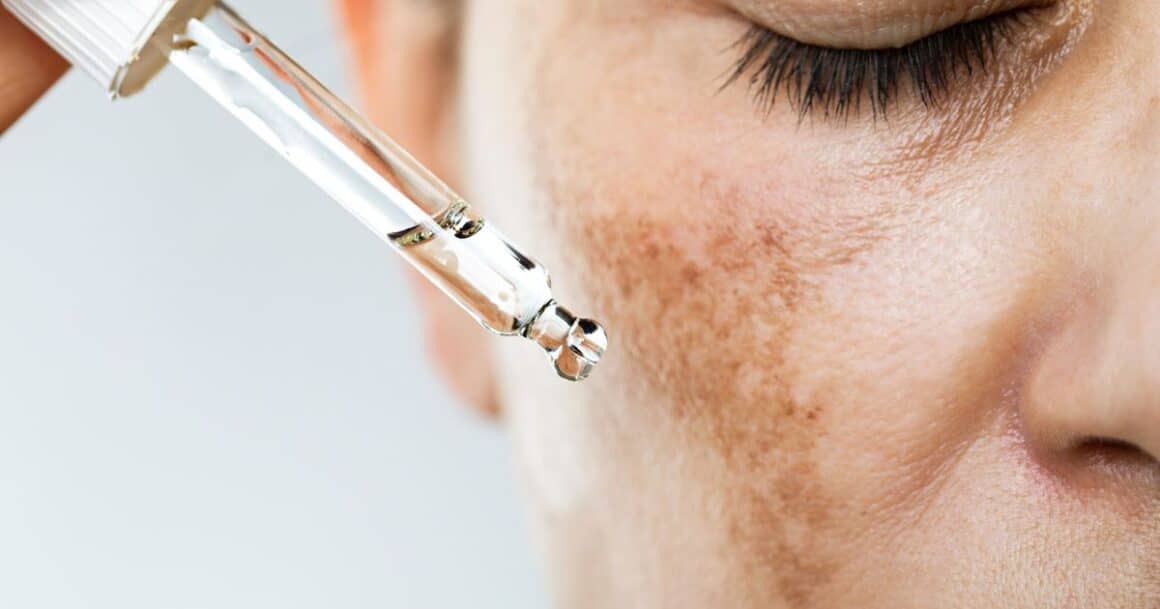
What is Hyperpigmentation?
Hyperpigmentation is a common skin condition characterized by patches or areas of skin that become darker than the surrounding skin.
There are different types of hyperpigmentation, each with its characteristics and causes. (source)
Let’s take a closer look at some of the most common types:
Melasma: This is often called the “mask of pregnancy” because it commonly occurs during pregnancy.
However, it can affect anyone, regardless of gender or pregnancy status. Melasma appears as brown or grayish-brown patches, usually on the face, particularly on the cheeks, forehead, nose, or upper lip. (source)
Age Spots: Sunspots or Solar Lentigines are also known as “age spots” or “liver spots,” although they have no connection to the liver.
Sunspots or dark spots appear as small, flat, darkened patches on skin areas frequently exposed to the sun, such as the face, hands, shoulders, and arms.
They’re like little reminders of all those fun times you spent under the sun. (source)
Post-Inflammatory Hyperpigmentation (PIH): This type of hyperpigmentation often occurs after an injury or inflammation of the skin, such as acne, cuts, burns, or skin conditions like eczema or psoriasis.
PIH appears as darker patches or spots in the affected areas. It’s like your skin’s way of holding onto the memory of the past skin issue. (source)
Freckles: Freckles are small, flat spots that are usually tan, light brown, or red.
They are usually genetic and more commonly seen in fair-skinned individuals. Freckles can appear on the face, shoulders, and other sun-exposed areas. It’s like your skin decided to sprinkle a little extra charm on those specific spots.
Post-Inflammatory Erythema (PIE): PIE is not technically a form of hyperpigmentation but rather red or purplish discoloration that occurs after inflammation or injury to the skin.
It’s like a temporary mark left behind, but it can appear similar to hyperpigmentation until it fades over time. (source)
Causes of Hyperpigmentation
Hyperpigmentation, a common skin condition that causes dark patches or spots on the skin, can be caused by several factors. It’s like your skin throwing a tantrum in response to certain triggers. Here are some of the main culprits:
Sun Damage: Think of the sun as that overbearing friend who doesn’t know when to stop.
Too much sun exposure can cause your skin to produce more melanin, the pigment responsible for your skin color, leading to sun spots or age spots.
Skin Inflammation: Inflammation can also cause your skin to produce more melanin.
This can happen due to conditions like acne, lupus, or psoriasis. It’s like your skin overreacting and going into overdrive in response to these conditions.
Aging: As we age, our skin undergoes numerous changes. One of these changes can be the development of hyperpigmentation brown spots, “age spots.”
These are generally a result of a combination of the skin’s aging process and years of exposure to the sun. It’s as if your skin is a diary that records all those sunny days you’ve enjoyed.
Hormonal Changes: Sometimes, your hormones can play a significant role in hyperpigmentation. Conditions like pregnancy or using hormonal contraceptives can lead to melasma, a form of hyperpigmentation that often appears on the face.
Medications: Certain medications can increase melanin production, leading to hyperpigmentation. These can include certain antibiotics, hormone treatments, and antimalarial drugs.
Medical Conditions: Certain conditions, such as Addison’s disease, can also increase melanin production.
Skin Injuries: When the skin heals after an injury or a surgical procedure, it can sometimes leave behind darker patches, often referred to as post-inflammatory hyperpigmentation.
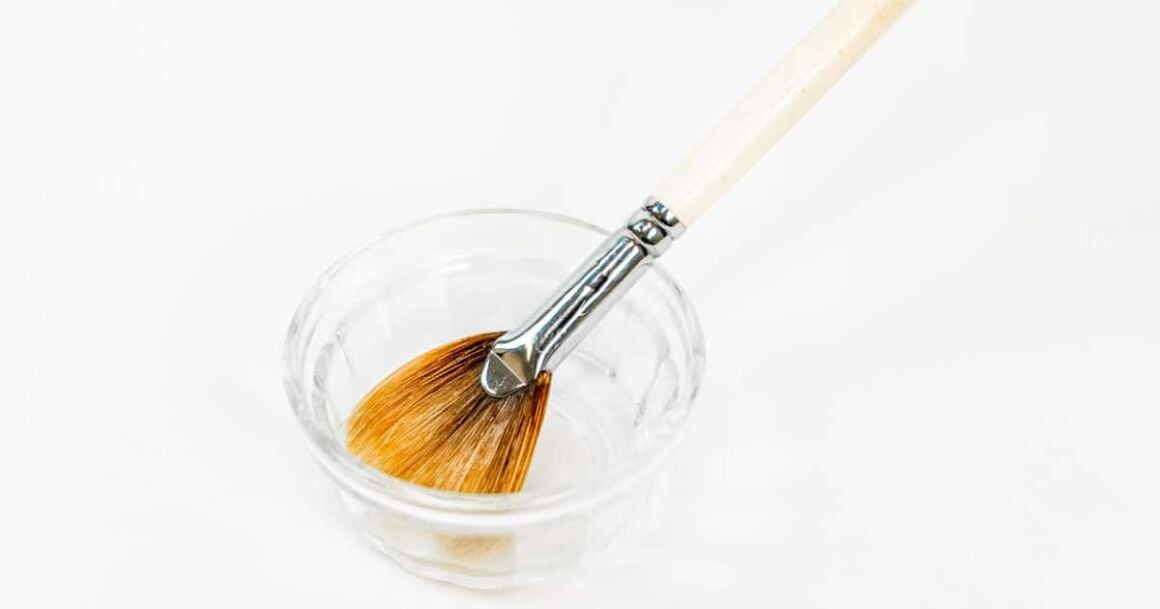
What is a Chemical Peel
A chemical peel, also known as chemexfoliation or derma peeling, uses a chemical solution (hence the name) to “peel” away the top layer of skin.
This solution is typically made up of acids, like glycolic acid, lactic acid, or trichloroacetic acid, that are known to improve the appearance of the skin.
Chemical peels can vary in intensity, from light to medium and deep peels, depending on the strength of the chemicals used.
They can help address various skin concerns, including skin hyperpigmentation, acne scars, wrinkles, and uneven skin tone.
The Benefits of Chemical Peels
Chemical peels have several benefits that can truly transform your skin. They’re like that multi-tool gadget everyone should have in their skincare toolbox.
Here are some key benefits of a chemical peel:
Exfoliates the Skin: Chemical peels are like your skin’s best friend that help you let go of the old and welcome the new. They remove the dead skin cells and damaged outer layers of the skin, revealing a fresh, new layer underneath.
Improves Skin Tone and Texture: This treatment can help improve your skin tone and overall texture. It’s like a Photoshop tool but for your real-life skin. ;0
Minimized pore size: Chemical peels work by exfoliating the outer layers of the skin, removing dead skin cells, and stimulating cell turnover. As a result, they can help to unclog pores and remove debris that can contribute to their visibility. With regular use, chemical peels can help refine the texture of your skin, making pores appear more minor and less noticeable.
Reduces Hyperpigmentation: Chemical peels can be especially effective for treating hyperpigmentation, dark spots, or discoloration. They help lighten the dark areas and make your skin tone more even.
Minimizes Fine Lines and Wrinkles: If you’re concerned about signs of aging, chemical peels might be your answer.
They help reduce fine lines and wrinkles, making your skin appear smoother and more youthful.
Treats Acne and Reduces Acne Scarring: Certain types of chemical peels can also help treat acne and reduce the appearance of acne scars.
Boosts Collagen Production: Chemical peels can help boost collagen production by stimulating your skin. It’s as if they wake up your skin and say, “Hey, let’s make more collagen and keep this skin firm and supple!”
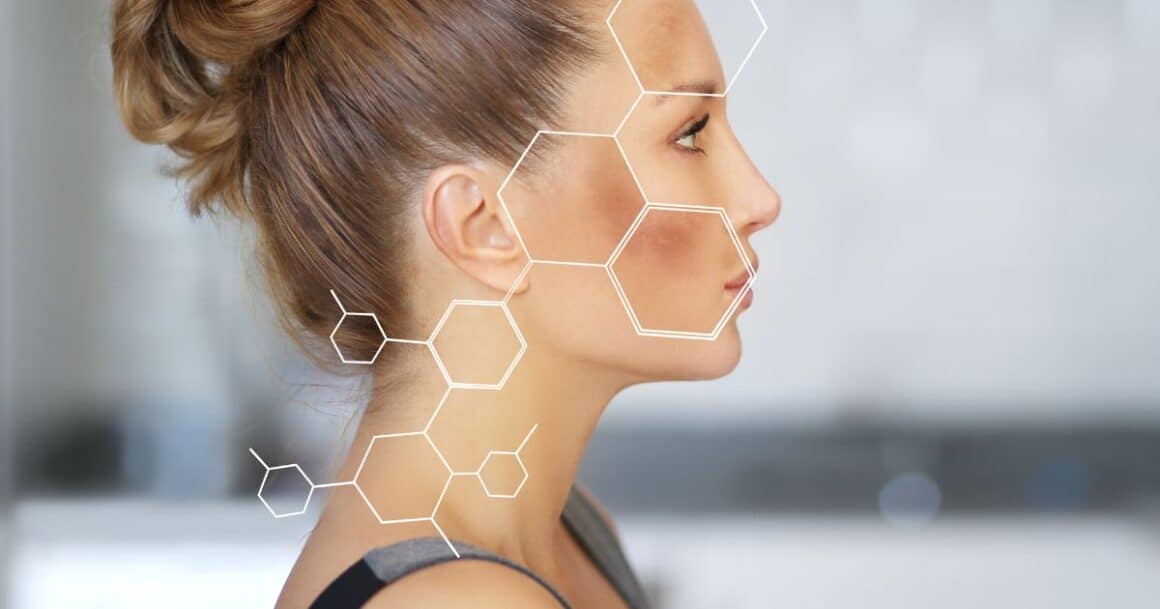
The Different Types of Chemical Peels
Light Peels
Light peels, also known as superficial peels, are the mildest type of chemical peel.
They typically use alpha-hydroxy acids (AHAs) like glycolic acid peels or lactic acid peels or beta-hydroxy acids (BHAs) like salicylic acid peels.
The goal here is to lightly exfoliate the epidermis, the outermost layer of the skin.
These peels can be great for addressing early signs of hyperpigmentation. Since they work on the surface, they can remove pigment-containing cells, resulting in a more even skin tone.
The effects are typically subtle; multiple treatments are usually needed to achieve the desired results.
Light peels are best for normal, sensitive skin types.
Medium Peels
A medium-depth peel can go a step further. This type of peel penetrates both the epidermis and the upper-middle layers of the dermis.
Trichloroacetic acid (TCA peel) is often used in medium peels, sometimes in combination with glycolic acid.
Medium peels can be effective for more noticeable hyperpigmentation. They delve deeper to exfoliate cells that contain more ingrained pigment.
These peels can have a more noticeable effect on the skin but also require more downtime for recovery.
Deep Peels
Deep chemical peels penetrate the middle to lower layers of the dermis, offering the most dramatic and long-lasting results. Deeper peels often use phenol and, on occasion, high concentrations of TCA.
When it comes to hyperpigmentation, deep peels can treat severe discolorations that other peels can’t reach.
However, because of their depth and intensity, they require the longest recovery time and carry the most potential risks, including scarring and changes in skin color.
Therefore, deep peels are less commonly used for hyperpigmentation than light and medium peels.
When treating hyperpigmentation, the choice of peel will depend on the severity of the discoloration, your skin type, and overall health.
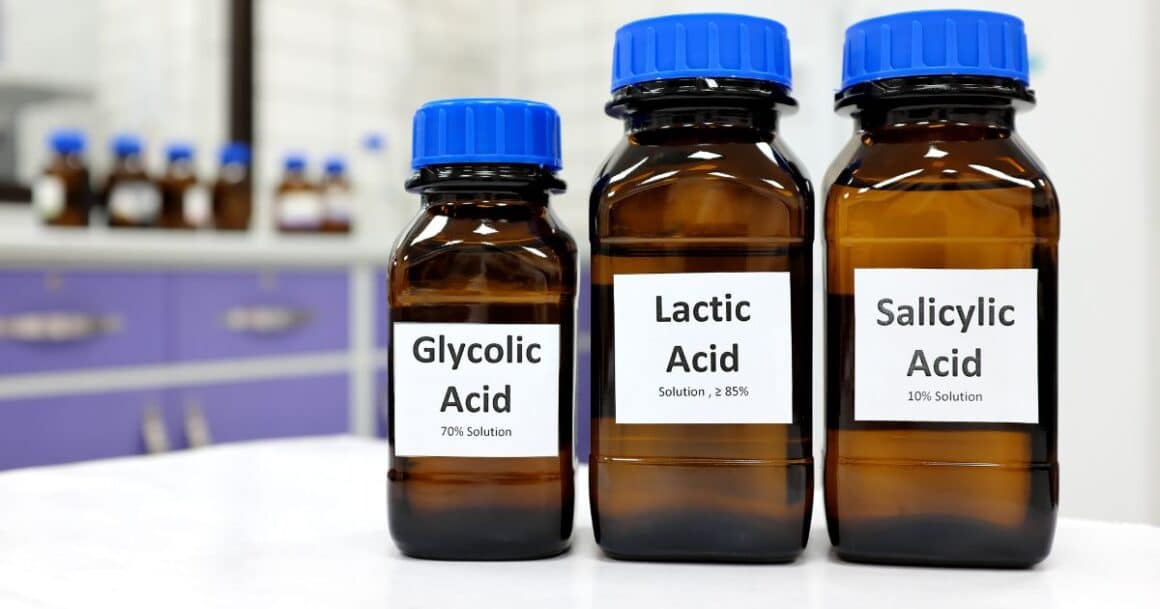
The Best Type of Chemical Peel based on Skin Type
Let’s explore the best types of chemical peels for different skin types and specific needs regarding hyperpigmentation.
Normal Skin
If you have normal skin, you’re in luck because you have a wider range of options. Both light and medium peels can work well for you.
Light peels containing AHAs like glycolic or lactic acid can help maintain your skin’s radiance and address mild hyperpigmentation.
Medium peels with ingredients like TCA can provide deeper exfoliation and improve moderate hyperpigmentation concerns.
Dry Skin
For dry skin, it’s important to choose a chemical peel that doesn’t overly strip or dehydrate your skin.
Light peels with hydrating ingredients like hyaluronic acid or lactic acid can gently exfoliate and improve hyperpigmentation while keeping your skin’s moisture barrier intact.
Look for peels that offer hydration and nourishment alongside exfoliation.
Oily skin or Acne-Prone Skin
Oily or acne-prone skin can benefit from peels that help control excess oil production and address hyperpigmentation caused by acne or post-inflammatory marks.
Medium peels containing salicylic acid, a BHA known for its acne-fighting properties, can effectively treat both acne and hyperpigmentation.
BHAs can penetrate the pores and exfoliate the skin, reducing breakouts and improving the appearance of acne-related dark spots.
Sensitive Skin
If you have sensitive skin, it’s crucial to proceed cautiously and choose gentle, mild peels.
Light peels with gentle AHAs like mandelic acid or PHAs (polyhydroxy acids) can provide exfoliation without causing excessive irritation.
These chemical peels can help improve hyperpigmentation while being more tolerable for sensitive skin types.
It’s essential to start with low concentrations and do a patch test before applying the peel to your entire face.
Combination Skin
Combination skin requires a balanced approach. You may find that a combination of light and medium peels works best for you.
Light peels can help address hyperpigmentation on drier areas of your face, while medium peels can provide deeper exfoliation on oilier areas.
Customizing your treatment based on the specific needs of different areas of your face can be a great approach.
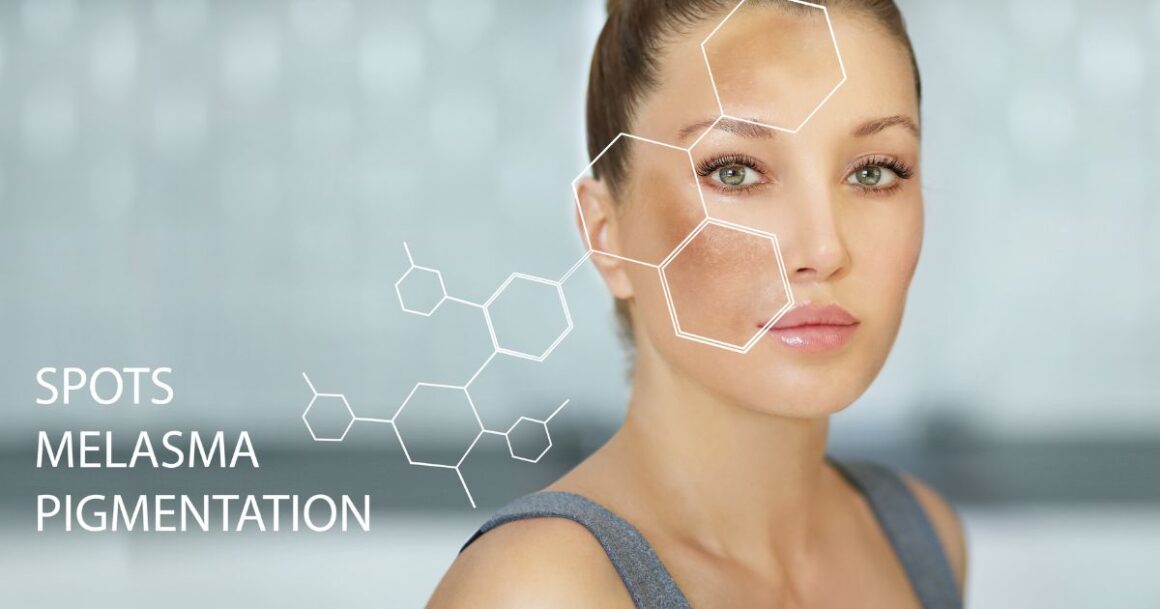
The Best Chemical Peels for Hyperpigmentation on Face
One of the great advantages of chemical peels is that many can be done in the comfort of your home.
At-home peels are like bringing the spa experience right to your doorstep.
Having the option to do chemical peels at home provides convenience and flexibility. You don’t have to schedule appointments or make time for a visit to the dermatologist.
The Best Light Chemical Peels for Hyperpigmentation on the Face
Dr. Dennis Gross Alpha Beta Extra Strength Daily Peel
This daily peel from Dr. Dennis Gross is a two-step treatment that uses a blend of seven acids to combat various skin issues, including hyperpigmentation.
It’s a simple two-step routine that works like magic. Step 1 does some serious exfoliating, making skin look smoother, younger, and more alive.
Step 2 balances things out and keeps skin feeling fresh and rejuvenated. This daily peel, recommended by dermatologists, is a super easy light chemical peel at an affordable price.
Paula’s Choice Skin Perfecting 8% AHA Gel
This skincare gem packs the power of an 8% Alpha Hydroxy Acid (AHA) gel to help you achieve your skin goals.
The 8% AHA formulation gently exfoliates your skin, effectively removing dead cells and promoting cell turnover, which leads to a brighter, more even complexion.
The lightweight gel texture makes it easy to apply and absorbs quickly, leaving your skin feeling fresh and rejuvenated without any greasy residue.
Whether you’re targeting fine lines or rough texture, or looking to improve overall skin tone, Paula’s Choice Skin Perfecting 8% AHA Gel is your trusted ally in the quest for healthier, smoother, and more youthful-looking skin
The Ordinary Peeling Solution with AHA 30% & BHA 2%
This powerful skincare treatment combines the exfoliating benefits of alpha-hydroxy acids (AHA) and beta-hydroxy acids (BHA) to deliver outstanding results.
The AHA, at a high concentration of 30%, works to gently exfoliate your skin’s surface, diminishing dullness, improving texture, and reducing the appearance of hyperpigmentation, fine lines, and wrinkles while clearing out impurities and preventing breakouts.
This potent combination of AHA and BHA provides a practical yet controlled exfoliation experience.
The peeling solution is easy to apply and should be left on for a short time, leaving your skin refreshed, revitalized, and glowing.
The QRxLabs Salicylic Acid peel 20%
The QRxLabs Salicylic Acid Peel 20%, is a powerhouse skincare treatment is designed to address multiple skin concerns effectively.
Hyperpigmentation: With a potent 20% salicylic acid concentration, this peel dives deep into your skin, helping to fade dark spots and even out your skin tone.
Uneven, Rough Skin Texture: The exfoliating prowess of salicylic acid smoothens and refines your skin’s texture, bidding farewell to roughness and revealing a more polished complexion.
Acne Troubles: Salicylic acid’s ability to penetrate pores makes it an ideal ally against acne. It helps unclog pores, reduce inflammation, and prevent future breakouts.
The QRxLabs Salicylic Acid Peel 20% is thoughtfully formulated for safe and effective at-home use. It’s user-friendly, providing controlled exfoliation that revitalizes your skin.
Best Medium-depth Peels for Hyperpigmentation
QRxLabs Glycolic Acid 70% Gel Peel
This professional-grade chemical peel combines the exfoliating benefits of a 70% glycolic acid concentration with the soothing properties of chamomile and green tea extracts.
Professional-Grade Exfoliation: With a 70% glycolic acid concentration, this gel peel is designed to deliver serious exfoliation.
Soothing and Nourishing: Infused with chamomile and green tea extracts, this peel not only exfoliates but also calms and rejuvenates your skin, minimizing any potential irritation.
The QRxLabs Glycolic Acid 70% Gel Peel is formulated to provide the benefits of a professional-grade peel in the comfort of your home. It’s easy to apply and ensures controlled exfoliation for optimal results.
The Divine Glycolic Acid Peel 70%
This chemical 70% chemical peel works wonders for a more radiant and youthful complexion!
This peel effectively targets various concerns, including fine lines, acne scars, and uneven skin texture such as dark spots and hyperpigmentation.
Divine Glycolic Acid Peel offers professional-grade results in the comfort of your own home.
It’s easy to apply, ensuring that you have control over the process, which is essential for achieving the best possible outcome.
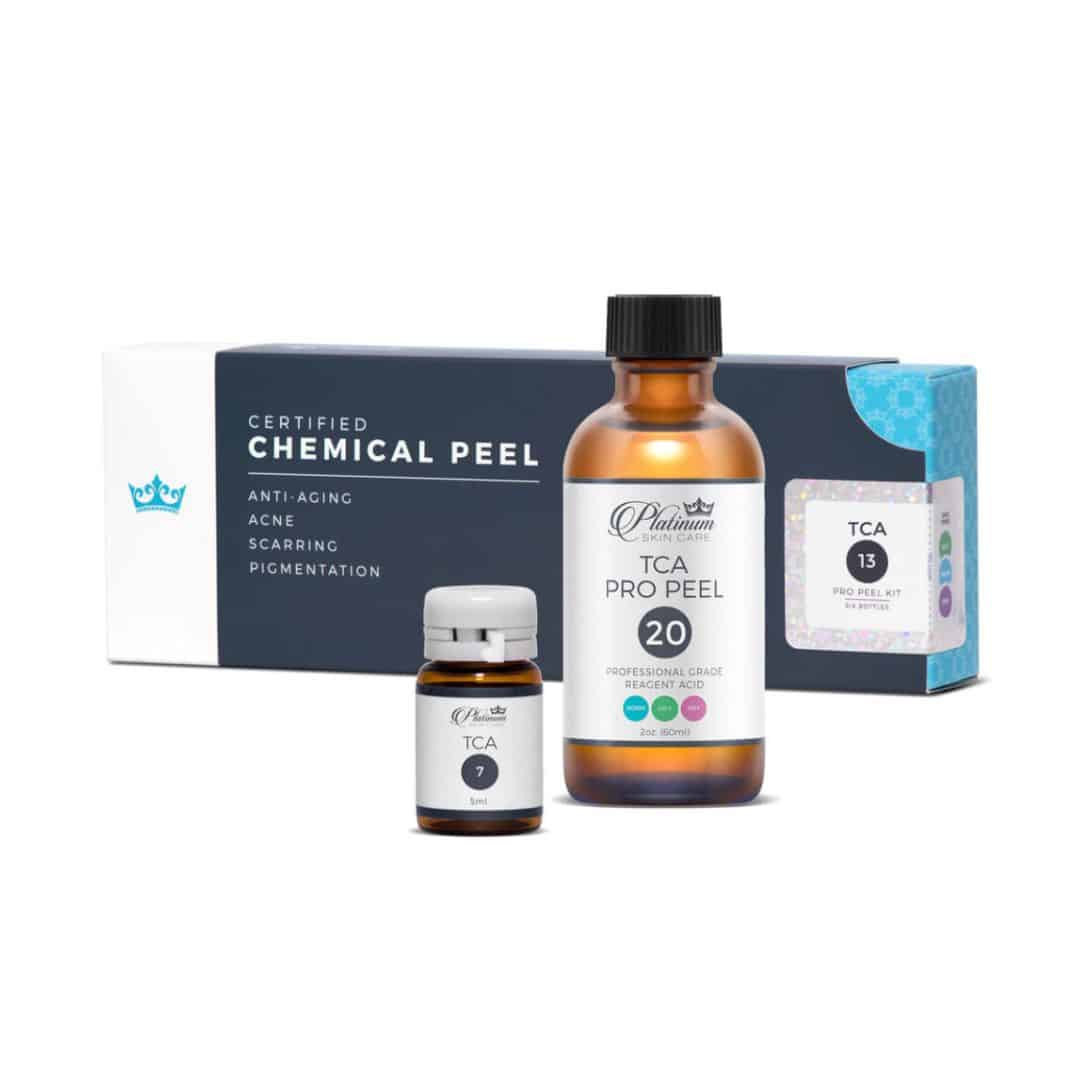
Platinum Skin Care TCA Peel
Platinium Skin Care’s versatile TCA Peel Collection offers four strengths: 7%, 13%, 20%, and 30%.
These chemical peels are designed to cater to diverse skincare needs, each with unique benefits.
The 7% TCA Peel provides a gentle exfoliation, ideal for brightening their complexion and addressing minor imperfections.
Stepping up to the 13% TCA Peel offers a more significant skin tone and texture improvement, making it an excellent choice for those with moderate concerns.
The 20% TCA Peel targets fine lines, acne scars, and uneven skin texture for deeper skin renewal, resulting in a more youthful appearance.
The 30% TCA Peel (my personal fav) is the powerhouse of the collection, providing an intense transformation that effectively addresses stubborn issues, leaving you with remarkably rejuvenated skin.
No matter your skincare goal, Platinium Skin Care’s TCA Peel Collection has a solution to help you achieve smoother, more vibrant, and revitalized skin.
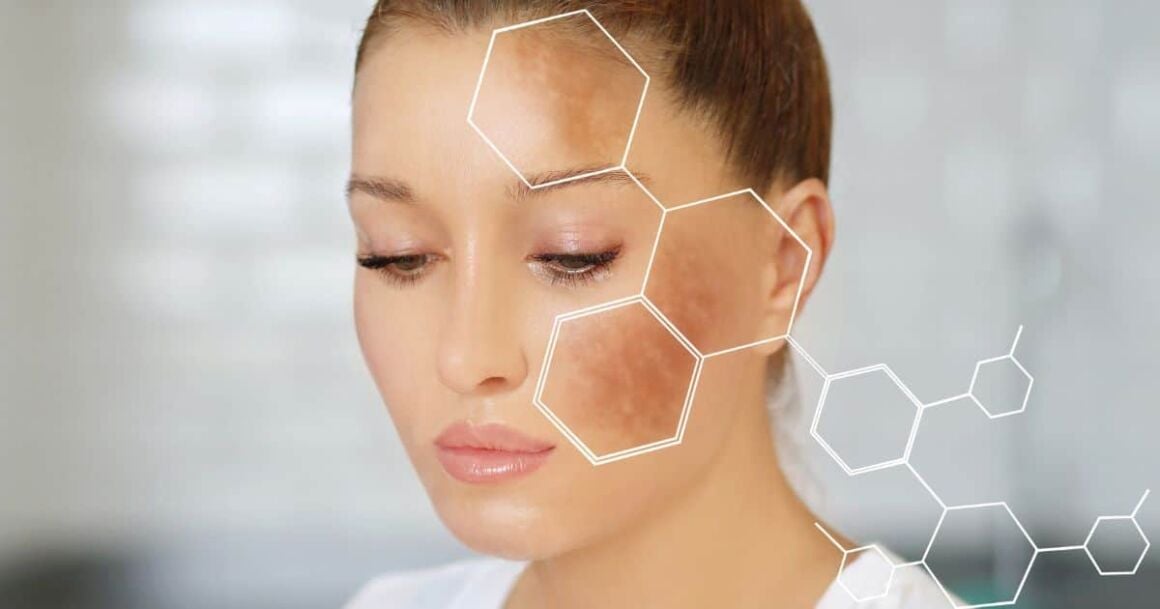
FAQs: Chemical Peels for Hyperpigmentation on Face
Is a chemical peel effective for treating hyperpigmentation?
Yes, chemical peels can be effective in treating hyperpigmentation. They work by exfoliating the skin and reducing the appearance of dark spots and uneven skin tone.
How does a chemical peel help with hyperpigmentation?
Chemical peels help with hyperpigmentation by removing the outer layers of the skin, where the pigmented cells reside. This process encourages the growth of new, healthy skin cells and can result in a more even complexion.
Are chemical peels safe for all skin types?
While chemical peels can be suitable for various skin types, it’s important to consult with a dermatologist or skincare professional to determine the best type of peel for your specific skin needs. Some peels may be better suited for certain skin types than others.
Are at-home chemical peels safe for hyperpigmentation?
At-home chemical peels can be safe for hyperpigmentation, especially when using milder peels. However, it’s crucial to carefully follow the instructions, do a patch test, and gradually increase the strength if tolerated. Deeper peels may require professional administration for optimal safety and results.
How long does it take to see results from a chemical peel for hyperpigmentation?
Results can vary depending on the type of peel and individual factors. Some people may see skin tone and hyperpigmentation improvements after one treatment, while others may require multiple sessions to achieve the desired results.
Patience is key, as gradual improvements over time are expected.
Are there any side effects or risks associated with chemical peels?
Like any skin treatment, chemical peels carry potential risks and side effects. These can include temporary redness, peeling, sensitivity, and increased sun sensitivity.
It’s important to carefully follow instructions, protect your skin from the sun, and seek professional advice if any concerns arise.
Conclusion: Best Chemical Peel for Hyperpigmentation
In conclusion, chemical peels can be valuable in addressing hyperpigmentation and achieving a more even and radiant complexion.
Whether you opt for a light peel, a medium peel, or seek professional treatment, these peels offer exfoliation and renewal benefits that can help reduce the appearance of dark spots, sun damage, acne scars, and other forms of hyperpigmentation.
The beauty of chemical peels is that they provide a customizable approach to skincare. With various types and strengths available, you can find a peel that suits your specific skin type and concerns.
However, it’s essential to consult with a dermatologist or skincare professional to determine the most suitable treatment plan for your skin.
While at-home peels can be convenient and practical for specific individuals, it’s essential to proceed cautiously, follow instructions diligently, and be mindful of potential risks and side effects.
Deeper peels may require professional administration for optimal safety and results.
Remember, achieving desired results with chemical peels takes time and consistency.
Gradual improvements over time are common, and maintaining a regular skincare routine alongside proper sun protection is essential for long-term success.
Always prioritize the health and safety of your skin. If you have any doubts or concerns, reach out to a skincare professional who can guide you on your journey to clearer, more even-toned skin.
So, whether you’re tackling melasma, sunspots, or post-inflammatory hyperpigmentation, chemical peels offer an exciting solution to help you reveal a more radiant and confident you.
Happy Peeling!
XO, Christine

I’ve been keeping it real since 1963. 🙂
I’m a child of God, a wifey, mama, grandma, full-time creative, domestic engineer, and self-care enthusiast.
I am obsessed with all things makeup and skincare and love getting my hands dirty out in the garden, my art room, or in the kitchen, whipping up something yummy for the fam.
I’m always down to chat and love collaborating with other creatives and brands alike!
Feel free to reach out anytime!






